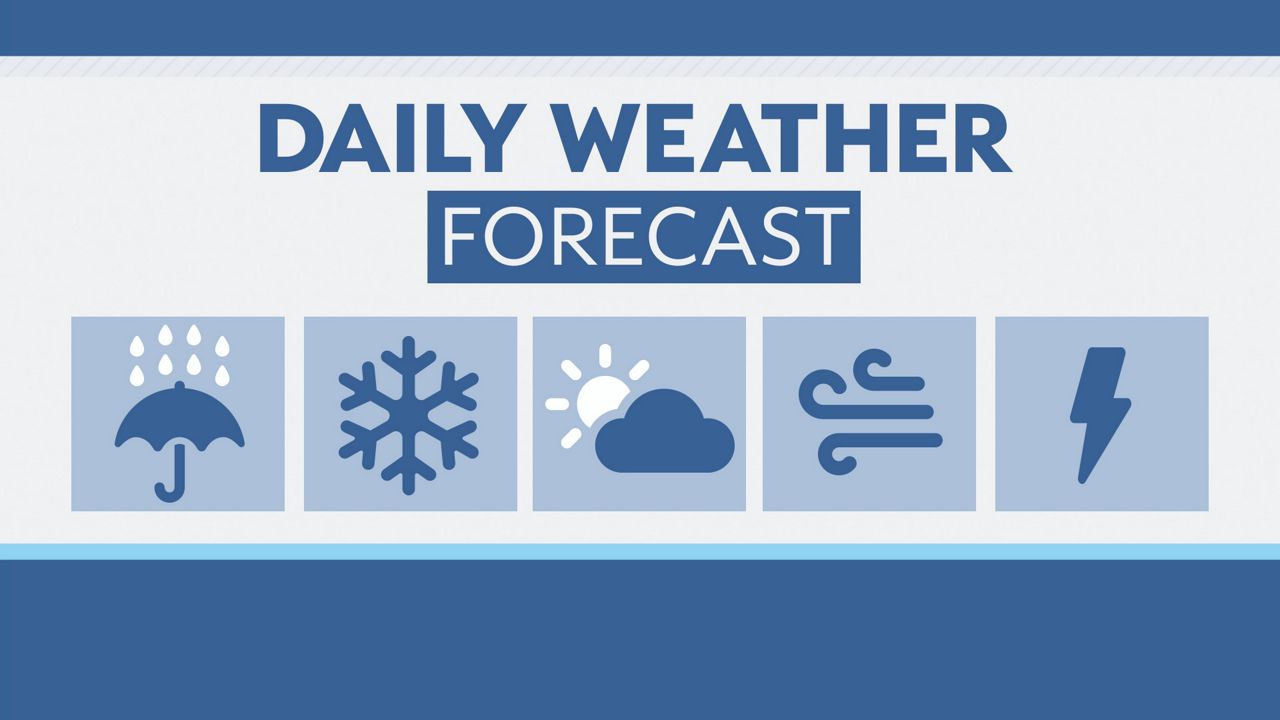From supply kits and home insurance, to storm tracking and power crew training, preparing for the Atlantic hurricane season can feel like a herculean task. But local officials say they're ready for whatever may come our way, and Spectrum Bay News 9 has everything you need to know to stay safe.
2022 Atlantic Hurricane Season (June 1 - Nov. 30)
- In this article:
- What to put in your supply kit
- Double check your home insurance
- Physically protecting your home
- Understanding the storm models
- La Niña's effect on hurricane season
- Meet the Hurricane Hunters
- Know your evacuation route
- Preparing hurricane shelters
- Saved by the Coast Guard
- Fixing power outages
- Reopening the ports
- What to put in your supply kit
- Double check your home insurance
- Physically protecting your home
- Understanding the storm models
- La Niña's effect on hurricane season
- Meet the Hurricane Hunters
- Know your evacuation route
- Preparing hurricane shelters
- Saved by the Coast Guard
- Fixing power outages
- Reopening the ports
Stocking Up
When a storm approaches, store shelves empty out. This season, with lingering supply chain issues causing unexpected shortages and record inflation driving prices up, it's more important than ever to stock up early on hurricane supplies.
Supply Kit Checklist
- Flashlights and extra bulbs
- Battery-operated radio
- Battery-operated lanterns
- Extra batteries (various sizes)
- Wind-up or battery-powered clock
- Matches
- First aid kit
- Duct tape
- Rain gear
- Plastic garbage bags
- Fire extinguisher
- Scissors
- Can opener
- Clean clothes
- Extra blankets and pillows
- Heavy gloves
- Food
- Bottled water (one gallon/person/day)
- Two coolers (one for drinks, one for food)
- Canned foods
- Bottled juice
- Dry pet food
Tracking Storms
With your home insured and secured, there's nothing left to do but wait to see if a hurricane heads our way.
All of the Sunshine State is a potential target for tropical systems, but not every region gets hit equally.
South Florida's geography, for example — a peninsula jutting into the nexus of the Atlantic, the Caribbean and the Gulf — raises its chances of absorbing a devastating landfall.
But come October, Tampa Bay and the rest of the Gulf Coast tends to find themselves in the crosshairs.
When a tropical system forms, Spectrum Bay News 9 Weather Experts leverage their combined decades of experience and critical information from the National Hurricane Center to forecast storm tracks and development.
That includes interpreting the forecast cone and spaghetti models to determine a storm's potential path and projected intensity.
It's always important to note, storms can change directions quickly, and their strength is infamously difficult to predict.
El Niño and La Niña — they're terms everyone living in Florida for at least a few years has heard during hurricane season.
But, not everyone knows what they are or what they do.
Basically, they're big weather patterns that can have a major impact on storms making the long trek across the Atlantic or firing up in the Caribbean.
Hunting Hurricanes
While hurricane forecasting has made great strides in reliability, no ground-based system or satellite can capture a more accurate picture of a hurricane than the men and women who fly straight into the eye of the storm.
National Oceanic and Atmospheric Administration (NOAA) Hurricane Hunter aircraft take off from Lakeland Linder International Airport. Packed with the latest storm-measuring technology, they blast through a hurricane's eyewall and provide meteorologists with the most precise data available.
Protecting Your Home
When the National Hurricane Center forecasts a storm will hit the Bay area, it's not a good time to find out your most expensive possession isn't protected. Contact your insurance company before an emergency to make sure you are covered if a storm strikes.
Home Insurance Claim Checklist
- Have your policy number available
- Contact your insurance company as soon as possible
- Make a list of damages and document with photos
- Fill out and return all claims forms promptly
- Ask questions if you don't understand the process
But experts say Florida's home insurance industry is in crisis, with rates continuing to rise across the state. Lawmakers are attempting to address it in a special session.
In the meantime, with fewer companies offering policies in Florida, many homeowners are simply forced to absorb the increased premiums.
Protecting your home and its contents is more than just a financial exercise. It's physical. Before a tropical storm or hurricane storms across Tampa Bay, homowners should take several simple steps.
Checklist for Securing Your Home
- Remove outdoor items
- Trim dead branches from trees
- Install shutters or board up windows
- Fill gas tanks and extra containers
- Withdraw extra cash
- Move furniture away from windows
- Store important documents and valuables in waterproof containers
Getting Out
In the event of an approaching tropical storm or hurricane, officials issue evacuation orders for coastal areas, low-lying neighborhoods and mobile home communities.
Pinellas County made some changes to its evacuation map this year, so you can check your address here.
Traffic can back up quickly, especially on the bridges, so it's important to know your evacuation route before a storm bears down on Tampa Bay.
Hunkering Down
Counties open storm shelters for evacuated residents who who are unable or unwilling to leave town, but emergency management officials say shelters should be treated as a last resort.
Specific shelters are set up for people with special needs. It's important to pre-register with the state.
Not all shelters accept pets, so pet owners need to make additional preparations.
To the Rescue
Invevitably, and often tragically, some residents in evacuation zones refuse to leave their homes before a hurricane storms the coast.
When stronger storms cause widespread destruction, many others — especially those who failed to prepare — quickly find themselves in perilous circumstances.
As the Florida National Guard deploys alongside local first responders, rescuing stranded people from the aftermath, pilots take off from U.S. Coast Guard Air Station Clearwater. Cargo plane pilots fly storm relief supplies and personnel straight into the disaster zone.
Restoring Electricity
Tropicals systems mean power outages — the more powerful the storm, the more widespread the interruption usually is.
Local crews work around the clock to repair the power grid as quickly as possible, enlisting help from other parts of Florida and across the country, if needed.
Check outage maps and see estimated repair times here when the lights go out.
Of course, rapid power restoration doesn't happen without extensive and repeated training. Local lineman know their job offers no margin for error, and mistakes are often deadly. They learn how to have each others' backs while training to safely turn Central Florida's power back on after a storm.
Protecting the Vulnerable
Power outages are potentially more dangerous than they are inconvenient.
Florida learned that tragic lesson five years ago in the aftermath of Hurricane Irma. As many as 12 people died from heat-related conditions after the air conditioning failed at a nursing home in Broward County.
The state's Department of Elder Affairs (FDOE) and its Agency for Health Care Administration (AHCA) responded with new rules that require all nursing homes to have an on-site alternative power source, capable of maintaining comfortable temperatures for at least 96 hours.
The Spectrum News Watchdog team combed through state data and found all facilities in the Central Florida and Tampa Bay areas currently have generators on property, but at least 15 are not in full compliance.
Hurricane Irma's mark can still be found in various places around the Tampa Bay area., and the storm's lingering consequences are still being dealt with.
From a flattened pier diverting the region's stream of tourists to a demolished building damaging a neighborhood's treasured history, conversations with those affected make it clear — five years later — the hurricane recovery continues.







